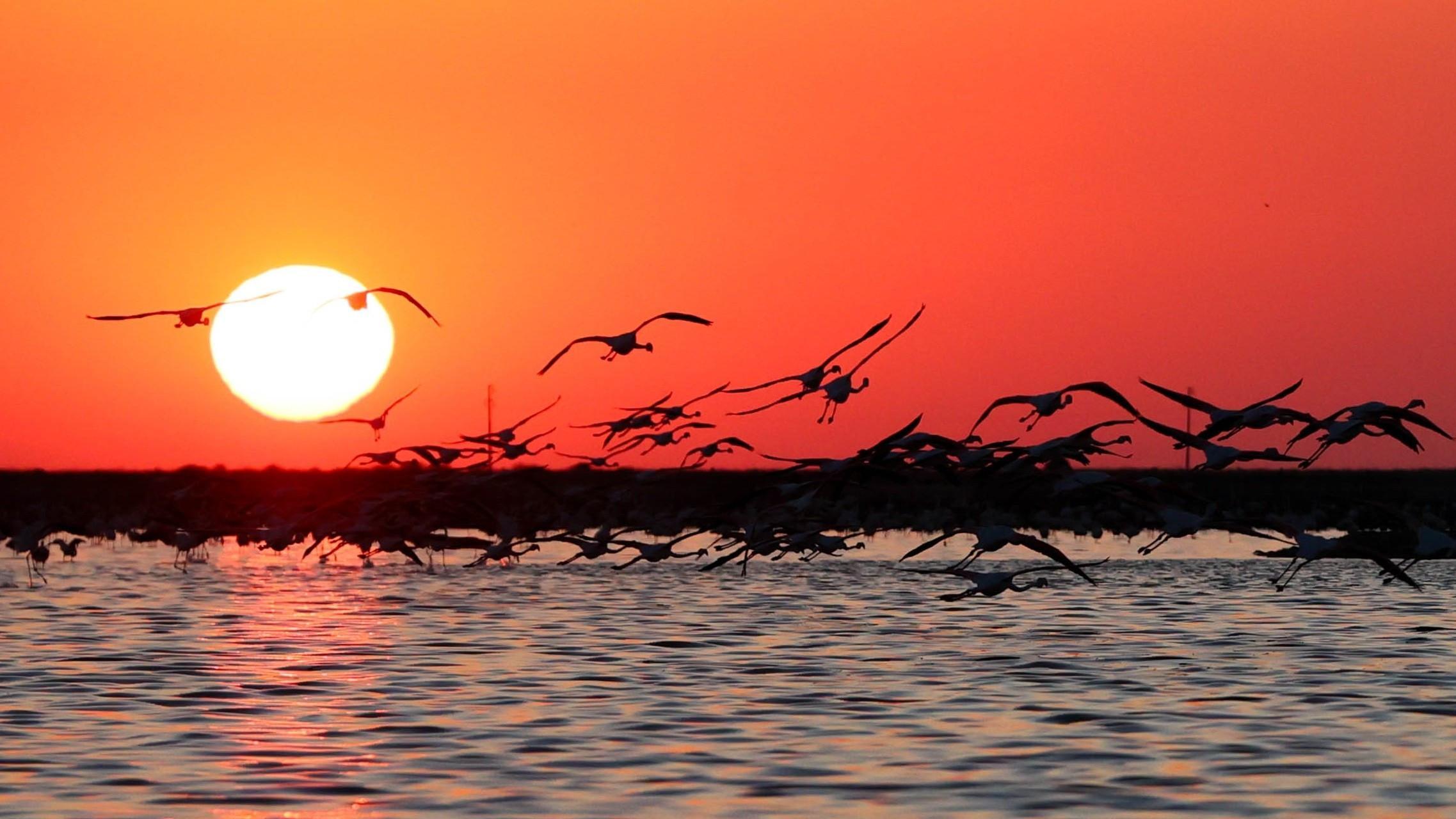
Thousands of flamingo chicks hatching on a man-made breeding island at İzmir Bird Paradise will be tracked via leg bands as part of a scientific monitoring initiative to understand their life cycles and migratory patterns.
The artificial island, located in the Gediz Delta, one of only two major flamingo breeding grounds in Türkiye, has been home to more than 13,000 newborn chicks this year. The 6.5-decare island was built in 2012 and is now considered one of the largest artificial flamingo breeding areas in the world.
For now, the chicks spend their days in a communal area known as the “nursery,” where they are cared for by their parents. After 20 to 25 days, the young flamingos begin to explore the water and gradually prepare for life in the wild.
Initially covered in dark gray and black down, the chicks feed on "Artemia salina," a type of brine shrimp. They stay with their parents for approximately two months, during which they learn to fly and become independent.
To protect the fragile breeding process, the İzmir Directorate of Nature Conservation and National Parks has implemented strict safety measures on the island. Flamingo chicks will be banded by trained experts and volunteers in August to support long-term conservation efforts.
Celal Murat Aslanapa, İzmir Bird Paradise Field Engineer, emphasized the ecological importance of the Gediz Delta, which is one of Türkiye’s 14 designated Ramsar sites protected under international wetland conventions.
“Every April, flamingos arrive to nest, and this year the entire island was covered. About 13,000 chicks hatched,” said Aslanapa. “They now moved into the nearby waters, which we call a ‘nursery,’ where they will remain under parental care for two months.”
By August, these young flamingos will begin to fly to other regions, including Salt Lake in central Türkiye and countries such as Greece, Italy, Spain, France and Tunisia, he added.
During the upcoming banding process, each chick will receive two identification rings — one PVC and one metal — placed on opposite legs. These rings allow researchers to identify individual birds, track their movements and document where they feed and settle.
Aslanapa noted the success of past banding efforts, including one flamingo that was seen in Naples, Italy, just two months after being tagged in İzmir in 2019, and another that reached the island of Mallorca two and a half months later.